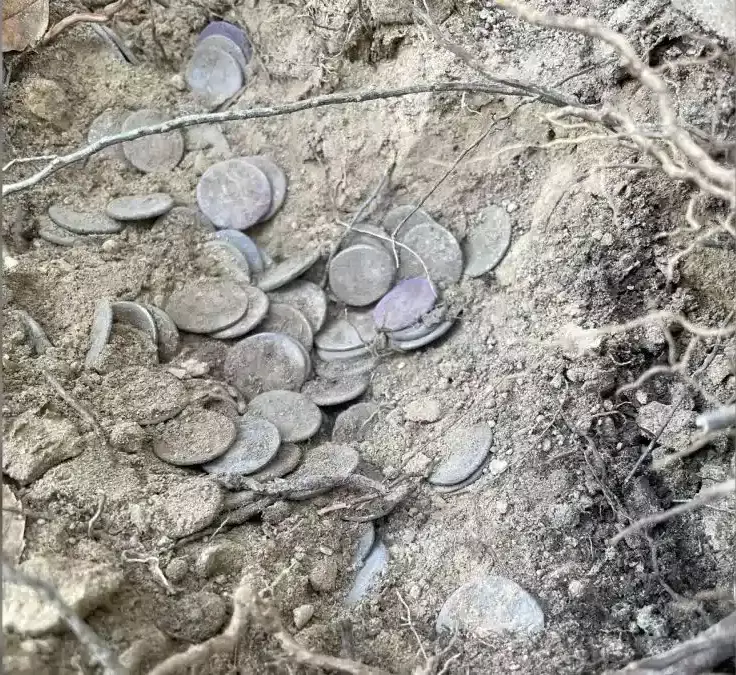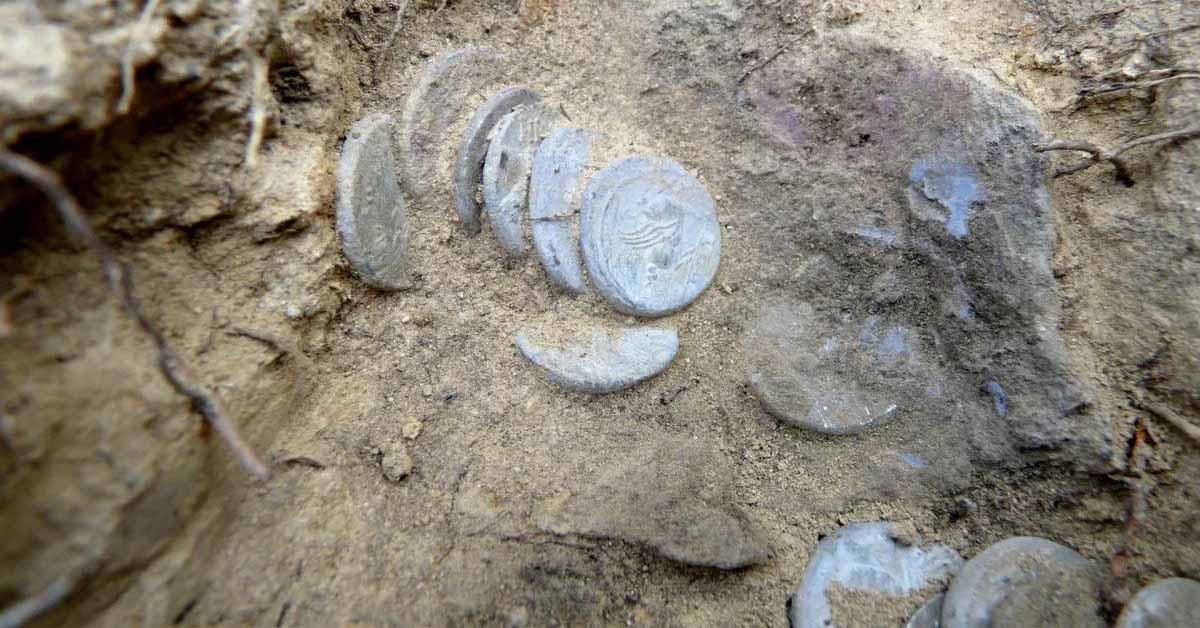A Trove of 175 Roman Coins, Hidden for 2,000 Years, Was Found in an Italian Forest
A hoard of 175 silver coins unearthed in a forest in Italy may have been buried for safe keeping during a Roman civil war.
The coins seem to date from 82 B.C., the year the Roman general Lucius Cornelius Sulla fought a bloody war across Italy against his enemies among the leaders of the Roman Republic, which resulted in Sulla’s victory and his ascension as dictator of the Roman state.
The archaeologists who investigated the hoard of 175 silver Roman denarii — the equivalent of tens of thousands of dollars in today’s money — suggested it may have been buried by a Roman soldier who was then killed in battle.

But historian Federico Santangelo, a professor who heads Classics and Ancient History at Newcastle University in the United Kingdom, said it also could have been buried by a businessman who wanted to keep his money safe during turbulent times. “I don’t think we should trace this money to a soldier, although in principle it is possible,” he told Live Science. Santangelo was not involved in the discovery.
The chronologies of such coin hoards show that many were buried during wars and upheavals. “A number of people at times of crisis buried their stash of money and for whatever reason were prevented from retrieving it,” Santangelo said.

Coin hoard
Researchers discovered the coin hoard buried in a terracotta pot in 2021 but kept it secret so that the site could be completely investigated.
Lorella Alderighi, an archaeologist with the provincial office for archaeology, told Live Science the coins were discovered by a member of an archaeological group in a newly-cut area of forest northeast of the city of Livorno in Tuscany.
Archaeological investigations revealed the earliest coins dated from 157 or 156 B.C., while the most recent were from 83 or 82 B.C., she said.

The area was probably forested then as it is now, on a small hill overlooking a swamp. The remains of a Roman farm had previously been found about half a mile (1 kilometer) away, she said.
“The coins have definitely been hidden — they constituted a ‘treasure’ or piggy bank,” she said. “The easiest way to hide valuables was to bury them underground, away from homes where no one could find them.”
But whoever buried the coins never returned to recover them; and Alderighi proposed that the owner may have been a Roman soldier caught up in the conflicts.
“These coins may have been the savings of a soldier returning home [during] military service,” she said. “He had hidden them because they constituted a useful sum, perhaps to buy and start his own farm.”

Turbulent times
Alderighi noted that the hoard was buried during a troubled period in Italian history.
A few years earlier, Italy had been gripped by the Social War between Rome and its Italian allies, while in 82 B.C. Sulla had just returned with his legions from Asia to confront his enemies in Rome, having already attacked the city in 88 B.C. and been declared a public enemy in 87 B.C.
“It was a very turbulent historical period,” she said. “Sulla’s soldiers conquered territories as they advanced from south to north. But central Italy and Tuscany had not yet been conquered.”
Santangello added that Sulla’s victory in late 82 B.C. was almost a “blueprint” for later Roman rulers.
His victory was followed about 30 years later by a much larger Roman civil war between Julius Caesar and Gnaeus Pompeius Magnus, or Pompey the Great, who rose to power as a deputy to Sulla. And Caesar’s victory in that war led directly to the rise to power of Augustus, the first Roman emperor, in 27 B.C.
“It became abundantly clear to everyone that whoever came out as the winner of the civil war would be — maybe not by law, but certainly in reality — the master of Rome,” Santangello said.




